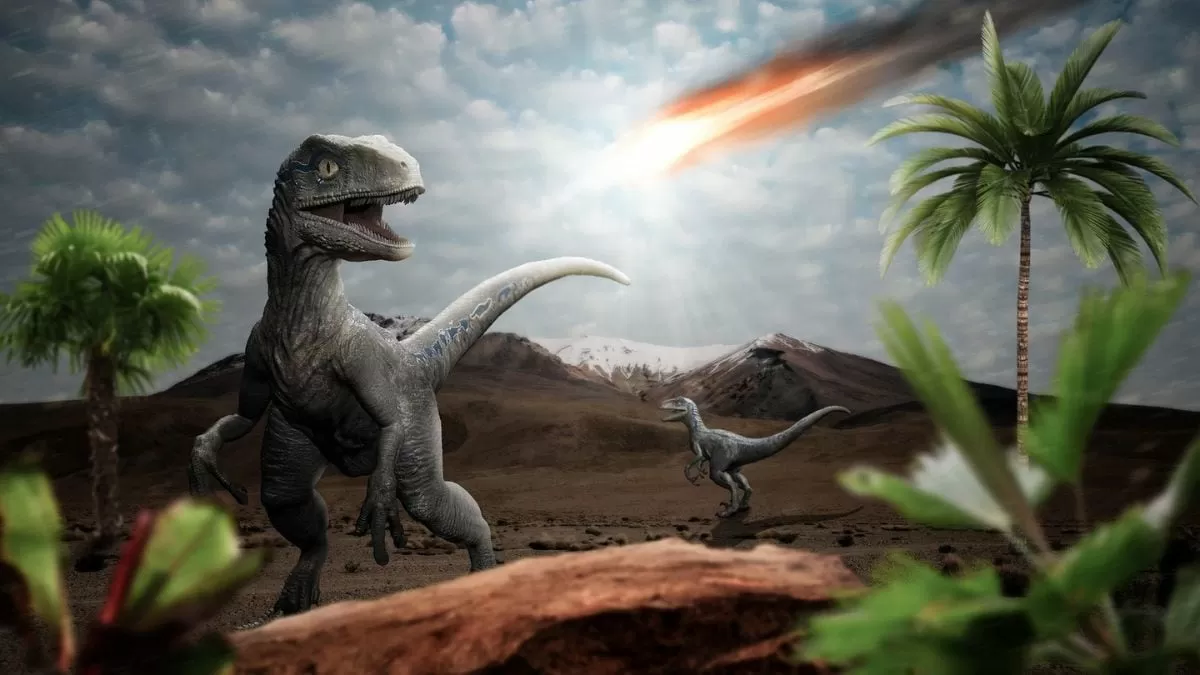A new study has revealed groundbreaking information about the prehistoric creatures that once roamed the Earth – dinosaurs. Contrary to popular belief, these magnificent creatures were not in decline before the asteroid impact that ultimately led to their extinction. In fact, the study suggests that dinosaurs were thriving and evolving at an impressive rate, making this discovery all the more fascinating.
For decades, it was believed that dinosaurs were on the decline before the catastrophic asteroid impact that occurred approximately 66 million years ago. This event is often referred to as the Cretaceous-Paleogene extinction event and is believed to have wiped out nearly three-quarters of all plant and animal species on Earth, including the dinosaurs. However, a team of researchers from the University of Bath and the Natural History Museum in London have challenged this long-held belief with their new study.
The study, which was recently published in the journal Nature Communications, analyzed the fossil records of over 1,600 different dinosaur species. The researchers used a statistical method called Bayesian phylogenetic analysis to create a more accurate timeline of the evolution of dinosaurs. This method takes into account the relationships between different species and their evolutionary rates, providing a more precise understanding of how dinosaurs evolved over time.
The results of the study were nothing short of astonishing. The researchers found that dinosaurs were actually diversifying and evolving at a steady pace in the last 10 million years of their existence. This period is known as the Maastrichtian, and it was previously thought to be a time of decline for dinosaurs. However, the study showed that during this time, new species of dinosaurs were emerging, and they were adapting to their environments in unique ways.
One of the most fascinating findings of the study was the discovery of new species of dinosaurs that were previously unknown to science. The researchers identified 18 new species that lived during the Maastrichtian period, including a new type of tyrannosaur, a new species of horned dinosaur, and a new species of hadrosaur. This goes to show that dinosaurs were not only thriving, but they were also evolving and diversifying at a rapid pace.
The study also sheds light on the diversity of dinosaurs during their final years. It was previously believed that the diversity of dinosaurs was declining, with only a few dominant species remaining. However, the study found that there were actually a wide variety of dinosaurs living during the Maastrichtian period, including small and large herbivores, as well as carnivores of different sizes. This diversity suggests that dinosaurs were successfully adapting to changing environmental conditions, which is a sign of a healthy and thriving population.
The new study has also challenged the popular theory that the asteroid impact was the sole cause of the extinction of dinosaurs. While the asteroid impact undoubtedly played a significant role, the study suggests that dinosaurs were already facing challenges before the impact. These challenges could have included climate change, volcanic activity, and competition for resources. This new information opens up the possibility of multiple factors contributing to the extinction of dinosaurs, rather than a single catastrophic event.
The findings of this study have significant implications for our understanding of dinosaurs and their extinction. It not only challenges long-held beliefs but also provides a more accurate and detailed picture of the final years of these magnificent creatures. This study also highlights the importance of constantly reevaluating and updating our knowledge of prehistoric life, as new technologies and methods become available.
In conclusion, the new study has revealed that dinosaurs were not in decline before the asteroid impact, but were in fact thriving and evolving. This discovery has opened up new avenues of research and has challenged our understanding of the extinction of dinosaurs. It is a reminder that there is still so much to learn about these ancient creatures, and that their legacy continues to fascinate and inspire us.








